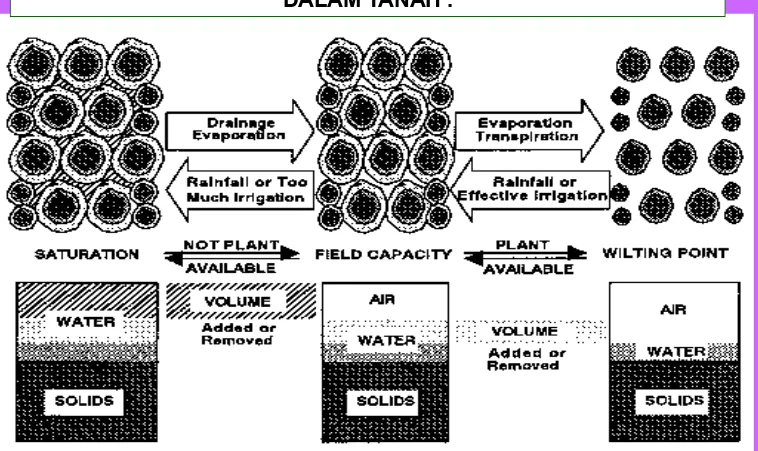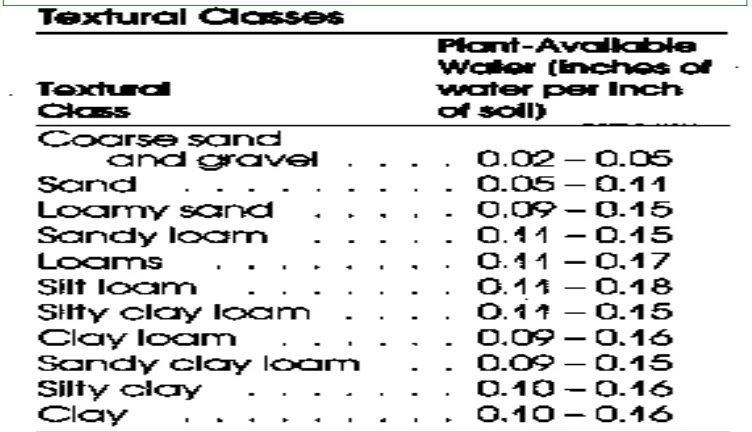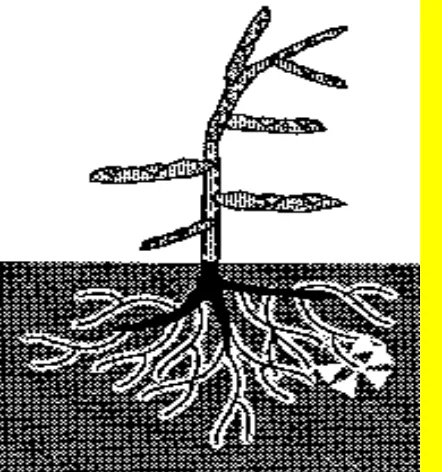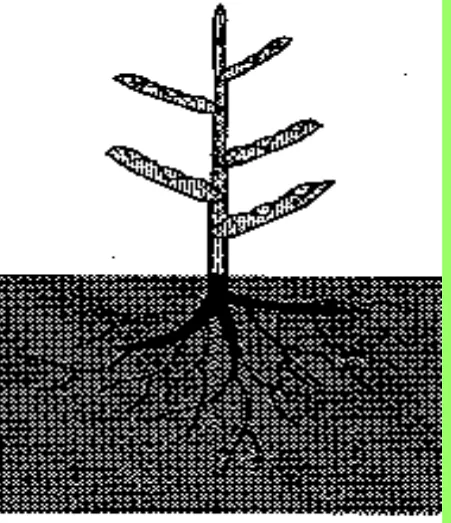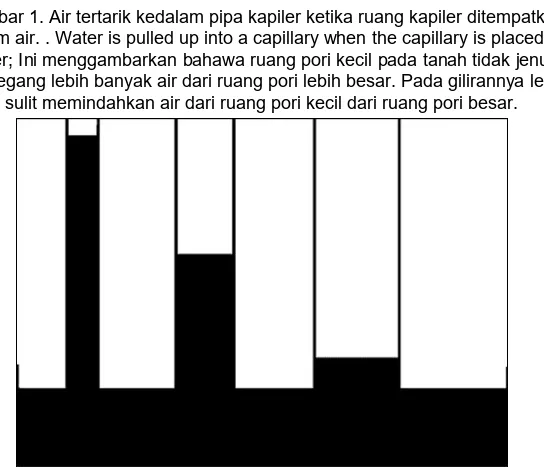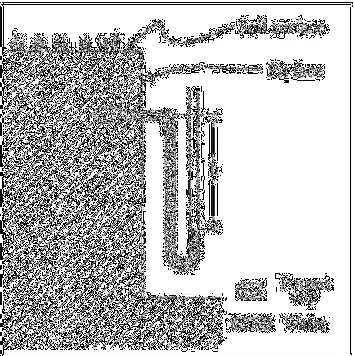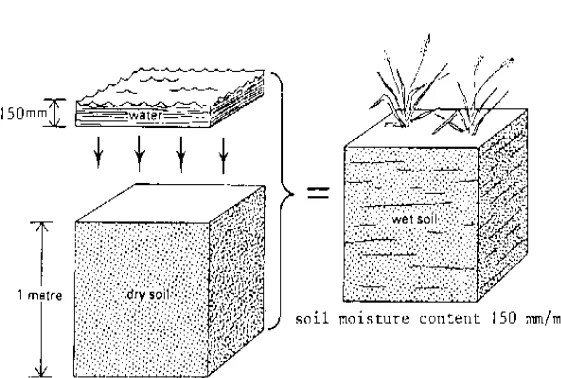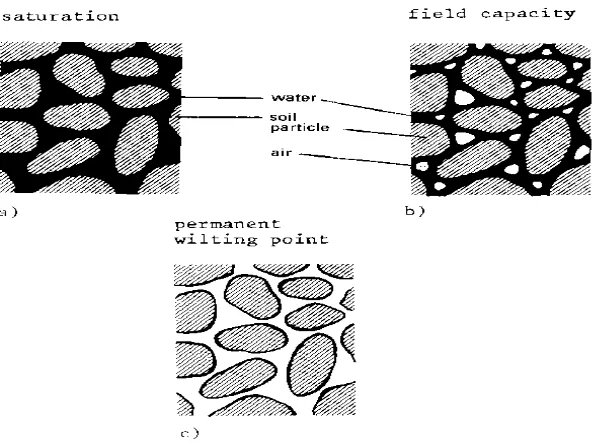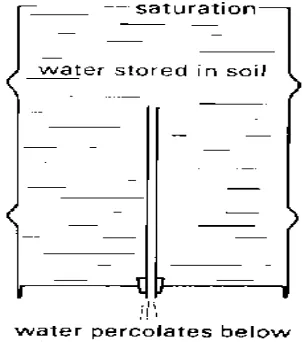PENGERTIAN
Pemanasan Global adalah indikasi naiknya suhu muka bumi secara global (meluas dalam radius ribuan kilometer) terhadap normal/rata-rata
catatan pada kurun waktu standard (ukuran Badan Meteorologi Dunia/WMO: minimal 30 tahun).
Perubahan Iklim Global adalah perubahan unsur-unsur iklim (suhu, tekanan, kelembaban, hujan, angin, dsb.nya) secara global terhadap
normalnya.
Iklim adalah rata-rata kondisi fisis udara(cuaca) pada kurunwaktu tertentu (harian, mingguan, bulanan, musiman dan data tahunan yang
diperlihatkan dari ukuran catatan unsur-unsurnya (suhu, tekanan, kelembaban, hujan, angin,
Pemanasan global (
global warming
) pada
dasarnya merupakan fenomena
peningkatan temperatur global dari tahun
ke tahun karena terjadinya efek rumah
kaca (
greenhouse effect
) yang disebabkan
oleh meningkatnya emisi gas - gas seperti
karbondioksida (CO2), metana (CH4),
dinitrooksida (N2O) dan CFC sehingga
energi matahari terperangkap dalam
atmosfer bumi. Kenaikan konsentrasi gas
CO2 ini disebabkan oleh kenaikan
pembakaran bahan bakar minyak (BBM),
batu bara dan bahan bakar organik
Meningkatnya suhu global
diperkirakan akan menyebabkan
perubahan-perubahan yang lain
seperti naiknya permukaan air laut,
meningkatnya intensitas fenomena
cuaca yang ekstrim serta perubahan
jumlah dan pola
presipitasi
.
Akibat-akibat pemanasan global yang lain
adalah terpengaruhnya hasil
Pemanasan global mengakibatkan dampak yang luas dan serius bagi lingkungan bio-geofisik (seperti pelelehan es di kutub, kenaikan muka air laut, perluasan gurun pasir,
peningkatan hujan dan banjir, perubahan iklim, punahnya flora dan fauna tertentu, migrasi fauna dan hama penyakit, dsb). Sedangkan dampak bagi aktivitas sosial-ekonomi
masyarakat meliputi :
gangguan terhadap fungsi kawasan pesisir dan kota pantai
gangguan terhadap fungsi prasarana dan sarana seperti jaringan jalan, pelabuhan dan bandara gangguan terhadap permukiman penduduk
pengurangan produktivitas lahan pertanian
BEBERAPA UNSUR PENYEBAB PEMANASAN
DAN PERUBAHAN IKLIM GLOBAL
Semakin tingginya Populasi
Ekploitasi lingkungan meningkat dengan
marak dan meluasnya perubahan
tataguna lahan yang berakibat pada
penciutan luasan hutan,
Kemajuan industri menimbulkan
pencemaran di darat, laut dan udara
yang berlanjut dengan perusakan gas
ozon di kutub atau lubang ozon di kutub
dan konsentrasi gas buang yang menjadi
selimut gas atau gas rumah kaca,
INDIKASI YANG TERKAIT
DENGAN PEMANASAN
DAN PERUBAHAN IKLIM
AIR TANAH
&
TANAMAN
Air dari tanah
CO2 dari UdaraFotosintesis:
CO2 + H2O ---- Karbohidrat (Glukosa)
Glukosa Pati
Stomata:
Pintu lalulintas CO2, O2, dan H2O
Fotosintesis:
CO2 + H2O Karbohidrat (Glukosa)
CO2 dari Udara
Glukosa Pati
dan senyawa organik lain dalam biji
Budidaya
Kurva Penggunaan Air Musiman
oleh Tanaman
KEBUTUHAN AIR TANAMAN
A plant has different water needs at different
stages of growth. While a plant is young it requires less water than
when it is in the reproductive stage.
When the plant
approaches maturity, its water need drops. Curves have been developed that show the
KEDALAMAN PERAKARAN TANAMAN
A plant’s root depth determines the depth to which soil water can be
extracted. A young plant has only shallow roots and soil water deeper
than rooting depth is of no use to the plant. Plants typically extract
about 40 percent of their water needs from the top quarter of their
root zone, then 30 percent from the next quarter, 20 percent from the
third quarter, taking only 10 percent from the deepest quarter.
Therefore, plants will extract about 70 percent of their water from
the top half of their total root penetration.
Deeper portions of the root zone can supply a higher percentage of
the crop’s water needs if the upper portion is depleted. However,
reliance on utilization of deeper water will reduce optimum plant
KUALITAS AIR & TANAH
For good plant growth, a soil must have adequate room for water and
air movement, and for root growth. A soil’s structure can be altered
by certain soil management practices. For example, excessive tillage
can break apart aggregated soil and excessive traffic can cause
compaction. Both of these practices reduce the amount of pore space
in the soil, and thus reduce the availability of water and air, and
reduce the room for root development.
Irrigation water with a high content of soluble salt is not as available
to the plant, so a higher soil water content must be maintained in
order to have water available to the plant. Increasing salt content of
the water reduces the potential to move water from the soil to the
roots. Some additional water would also be needed to leach the salt
below the crop root zone to revent build-up in the soil. Poor quality
Kebutuhan air BAWANG PUTIH (
Allium cepa
)
Untuk mencapai hasuil optimum tanaman onion memerlukan 350-550 mm air. Tanaman sangat peka terhadap kondisi defisit air tanah. Untuk mencapai hasil yang
tinggi, penurunan kandungan air tanah tidak boleh melebihi 25% air tanah tersedia. Tanaman paling peka terhadap defisit air selama periode pembentukan umbi, terutama selama periode pertumbuhan umbi yang cepat yang terjadi sekitar 60 hari
setelah transplanting. Tanaman juga sangat peka kekeringan selama masa transplantasi. Selama periode pertumbuhan vegetatif tanaman agak kurang peka terhadap defisit air tanah. Untuk mendapatkan hasil yang banyak dan kualitas yang
baik, tanaman memerlukan suplai air yang terkendali dan sering selama musim pertumbuhannya; akan tetapi irigasi yang berlebihan mengakibatkan pertumbuhan
terhambat.
Untuk mendapatkan ukuran umbi yang besar dan bobot yang tinggi, defisit air tanah terutama selama periode pembentukan hasil (Periode pembesaran umbi) tidak
Komposisi tana menurut volume
Tanah subur yg ideal:
• Mineral 45%
• Organic matter 5%
• Water 25%
Tiga komponen tanah
The soil system is composed of three major components: solid
particles (minerals and organic matter), water with various
dissolved chemicals, and air.
The percentage of these components varies greatly with soil texture
and structure.
An active root system requires a delicate balance between the three
soil components; but the balance between the liquid and gas phases
A soil profile is the sequence
of natural layers, or horizons,
in a soil. Each soil series
consists of soils having major
horizons that are similar in
color, texture, structure,
reaction, consistency, mineral
and chemical composition,
and arrangement in the soil
profile. The soil profile
extends from the surface
downward to unconsolidated
material. Most soils have three
major horizons called the
surface horizon, the subsoil,
STRUKTUR &
CIRI
H2O
Molekul air terdiri atas atom oksigen dan dua atom hidrogen, yang berikatan secara kovalen
Atom-atom tidak terikat secara linear (H-O-H), tetapi atom hidrogen melekat pada atom oksigen seperti huruf V dengan sudut 105o.
Molekul air bersifat dipolar:
Ilustrasi tentang penurunan potensial air
Plants develop the tension, or potential, to move soil water
from the soil into
the roots and distribute the water through the plant by adjusting the water potential,
or tension, within their plant cells.
The essence of the process is that water always moves from higher to lower water
potential.
For water to move from the soil, to roots, to stems, to
leaves, to air the water potential must always be
Lingkaran
Tanah-Air-Tanaman
LTAT mrpk sistem dinamik dan terpadu dimana air mengalir dari tempat dengan tegangan rendah menuju tempat dengan
tegangan air tinggi.
Serapan bulu akar Penguapan
Hilang melalui stomata daun (transpirasi)
Air kembali ke atmosfer
(evapo-transpirasi)
Air dikembalikan ke tanah melalui hujan
SISTEM TANAH-TANAMAN
Structure of water transport model for the soil-leaf continuum, with
the inputs outlined in boxes.
Root and shoot components are represented by a resistance network,
each component of which varies according to the inputted K(y)
function from vulnerability curves of xylem.
Layers of roots reach to different soil depths according to an inputted
root area profile. Canopy layers reflect an inputted leaf area and Y
profile.
Soil is modeled as a rhizosphere resistance connecting roots to bulk
soil of an inputted y and K(y).
Kekuatan ikatan antara molekul air dengan partikel tanah
dinyatakan dengan TEGANGAN AIR TANAH. Ini merupakan fungsi
dari gaya-gaya adesi dan kohesi di antara molekul - molekul air dan
partikel tanah
Partikel tanah
).
Fine textured soils with small pores can hold the greatest
amounts of PAW.
Coarse textured sandy soils with large pores can hold the least
Status Air
Tanah
Perubahan status air dalam tanah, mulai dari
kondisi jenuh hingga titik layu
Jenuh Kap. Lapang Titik layu
Padatan Pori
100g 20g udara 100g 10 g udara
100g air 40g tanah jenuh air kapasitas lapang
TEGANGAN
&
KADAR AIR
PERHATIKANLAH proses yang terjadi kalau tanah basah dibiarkan mengering.
Bagan berikut melukiskan hubungan antara tebal lapisan air di sekeliling partikel tanah dengan tegangan air
Bidang singgung tanah dan air
Koef. Koef. Kapasitas padatan tanah higroskopis layu lapang
10.000 atm
31 atm 15 atm 1/3 atm
10.000 atm Mengalir krn gravitasi
Tegangan air
JUMLAH AIR DALAM TANAH
The amount of soil water is usually measured in terms of water content as percentage by volume or mass, or as soil water potential. Water content does not necessarily describe the availability of the water to the plants, nor indicates,
how the water moves within the soil profile. The only information provided by water content is the relative amount of water in the soil.
Soil water potential, which is defined as the energy required to remove water from the soil, does not directly give the amount of water present in the root zone
either. Therefore, soil water content and soil water potential should both be considered when dealing with plant growth and irrigation.
The soil water content and soil water potential are related to each other, and the soil water characteristic curve provides
a graphical representation of this
27
TEGANGAN
vs
kadar air
Kurva tegangan - kadar air tanah bertekstur
lempung
Tegangan air, bar
31 Koefisien higroskopis Koefisien layu
Kapasitas lapang
0.1 Kap. Lapang maksimum
Air kapiler Air Air tersedia
STRUKTUR
&
CIRI
POLARITAS
Molekul air mempunyai dua ujung, yaitu ujung oksigen yg elektronegatif dan ujung hidrogen yang elektro-positif.
Dalam kondisi cair, molekul-molekul air saling bergandengan membentuk kelompok-kelompok kecil tdk teratur.
Ciri polaritas ini menyebabkan plekul air tertarik pada ion-ion elektrostatis.
Kation-kation K+, Na+, Ca++ menjadi berhidrasi kalau ada molekul air, membentuk selimut air, ujung negatif melekat kation.
Permukaan liat yang bermuatan negatif, menarik ujung positif molekul air.
Kation hidrasi Tebalnya selubung air tgt pd rapat muatan pd per-mukaan kation.
Rapat muatan =
STRUKTUR
&
CIRI
IKATAN HIDROGEN
Atom hidrogen berfungsi sebagai titik penyambung (jembatan) antar molekul air.
Ikatan hidrogen inilah yg menyebabkan titik didih dan viskositas air relatif tinggi
KOHESI vs. ADHESI
Kohesi: ikatan hidrogen antar molekul air
Adhesi: ikatan antara molekul air dengan permukaan padatan lainnya
Melalui kedua gaya-gaya ini partikel tanah mampu menahan air dan mengendalikan gerakannya dalam tanah
TEGANGAN PERMUKAAN
Terjadinya pada bidang persentuhan air dan udara, gaya kohesi antar molekul air lebih besra daripada adhesi antara air dan udara.
31
ENERGI AIR
TANAH
Retensi dan pergerakan air tanah melibatkan energi, yaitu: Energi Potensial, Energi Kinetik dan Energi Elektrik.
Selanjutnya status energi dari air disebut ENERGI BEBAS, yang merupakan PENJUMLAHAN dari SEMUA BENTUK ENERGI yang ada.
Air bergerak dari zone air berenergi bebas tinggi (tanah basah) menuju zone air berenergi bebas rendah (tanah kering).
Gaya-gaya yg berpengaruh
Gaya matrik: tarikan padatan tanah (matrik) thd molekul air; Gaya osmotik: tarikan kation-kation terlarut thd molekul air Gaya gravitasi: tarikan bumi terhadap molekul air tanah. Potensial air tanah
Ketiga gaya tersebut di atas bekerja bersama mempengaruhi energi bebas air tanah, dan selanjutnya menentukan perilaku air tanah, ….. POTENSIAL TOTAL AIR TANAH (PTAT)
PTAT adalah jumlah kerja yg harus dilakukan untuk memindahkan secara berlawanan arah sejumlah air murni bebas dari ketinggian tertentu secara isotermik ke posisi tertentu air tanah.
Hubungan potensial air tanah dengan energi bebas
Energi bebas naik bila air tanah berada pada letak ketinggian yg lebih tinggi dari titik
baku pengenal (referensi)
Energi bebas dari air murni Potensial tarikan bumi Menurun karena pengaruh osmotik
Menurun karena pengaruh matrik
Energi bebas dari air tanah
Potensial osmotik (hisapan)
POTENSIAL
AIR TANAH
POTENSIAL TARIKAN BUMI = Potensial gravitasi Pg = G.h
dimana G = percepatan gravitasi, h = tinggi air tanah di atas posisi ketinggian referensi.
Potensial gravitasi berperanan penting dalam menghilangkan kelebihan air dari bagian atas zone perakaran setelah hujan lebat atau irigasi
Potensial matrik dan Osmotik
Potensial matrik merupakan hasil dari gaya-gaya jerapan dan kapilaritas.
Gaya jerapan ditentukan oleh tarikan air oleh padatan tanah dan kation jerapan Gaya kapilaritas disebabkan oleh adanya tegangan permukaan air.
Potensial matriks selalu negatif
Potensial osmotik terdapat pd larutan tanah, disebabkan oleh adanya bahan-bahan terlarut (ionik dan non-ionik).
Pengaruh utama potensial osmotik adalah pada serapan air oleh tanaman
Hisapan dan Tegangan
Potensial matrik dan osmotik adalah negatif, keduanya bersifat menurunkan energi bebas air tanah. Oleh karena itu seringkali potensial negatif itu disebut HISAPAN atau TEGANGAN.
Hisapan atau Tegangan dapat dinyatakan dengan satuan-satuan positif.
Cara
Menyatakan
Tegangan
Energi
Tegangan: dinyatakan dengan “tinggi (cm) dari
satuan kolom air yang bobotnya sama dengan
tegangan tsb”.
Tinggi kolom air (cm) tersebut lazimnya
dikonversi menjadi logaritma dari sentimeter
tinggi kolom air, selanjutnya disebut pF.
Tinggi unit Logaritma Bar Atmosfer kolom air (cm) tinggi kolom air (pF)
10 1 0.01 0.0097
100 2 0.1 0.0967
346 2.53 0.346 1.3
1000 3 1
10000 4 10 9.6749
15849 4.18 15.8 15
31623 4.5 31.6 31
KANDUNGAN
AIR DAN
TEGANGAN
KURVA ENERGI - LENGAS TANAH
Tegangan air menurun secara gradual dengan meningkatnya kadar air tanah.
Tanah liat menahan air lebih banyak dibanding tanah pasir pada nilai tegangan air yang sama
Tanah yang Strukturnya baik mempunyai total pori lebih banyak, shg mampu menahan air lebih banyak
Pori medium dan mikro lebih kuat menahan air dp pori makro
Gerakan
Air Tanah
Tidak Jenuh
Gerakan tidak jenuh = gejala kapilaritas = air bergerak dari muka air tanah ke atas melalui pori mikro.
Gaya adhesi dan kohesi bekerja aktif pada kolom air (dalam pri mikro), ujung kolom air berbentuk cekung.
Perbedaan tegangan air tanah akan menentukan arah gerakan air tanah secara tidak jenuh.
Air bergerak dari daerah dengan tegangan rendah (kadar air tinggi) ke daerah yang tegangannya tinggi (kadar air rendah, kering).
Gerakan air ini dapat terjadi ke segala arah dan berlangsung secara terus-menerus.
Pelapisan tanah berpengaruh terhadap gerakan air tanah.
Lapisan keras atau lapisan kedap air memperlambat gerakan air
Lapisan berpasir menjadi penghalang bagi gerakan air dari lapisan yg bertekstur halus.
Gerakan Jenuh
(Perkolasi)
Air hujan dan irigasi memasuki tanah, menggantikan udara dalam pori makro - medium - mikro. Selanjutnya air bergerak ke bawah melalui proses gerakan jenuh dibawah pengaruh gaya gravitasi dan kapiler.
Gerakan air jenuh ke arah bawah ini berlangsung terus selama cukup air dan tidak ada lapisan penghalang
PERKOLASI
Jumlah air perkolasiFaktor yg berpengaruh:
1. Jumlah air yang ditambahkan
2. Kemampuan infiltrasi permukaan tanah 3. Daya hantar air horison tanah
4. Jumlah air yg ditahan profil tanah pd kondisi kapasitas lapang
Keempat faktor di atas ditentukan oleh struktur dan tekstur tanah Tanah berpasir punya kapasitas ilfiltrasi dan daya hantar air sangat tinggi, kemampuan menahan air rendah, shg perkolasinya mudah dan cepat
Tanah tekstur halus, umumnya perkolasinya rendah dan sangat beragam; faktor lain yg berpengaruh:
LAJU
GERAKAN
AIR TANAH
Kecepatan gerakan air dlm tanah dipengaruhi oleh dua faktor: 1. Daya dari air yang bergerak
2. Hantaran hidraulik = Hantaran kapiler = daya hantar i = k.f
dimana i = volume air yang bergerak; f = daya air yg bergerak dan k = konstante.
Daya air yg bergerak = daya penggerak, ditentukan oleh dua faktor: 1. Gaya gravitasi, berpengaruh thd gerak ke bawah
2. Selisih tegangan air tanah, ke semua arah
Gerakan air semakin cepat kalau perbedaan tegangan semakin tinggi.
Hantaran hidraulik ditentukan oleh bbrp faktor: 1. Ukuran pori tanah
2. Besarnya tegangan untuk menahan air
Pada gerakan jenuh, tegangan airnya rendah, shg hantaran hidraulik berbanding lurus dengan ukuran pori
Pd tanah pasir, penurunan daya hantar lebih jelas kalau terjadi penurunan kandungan air tanah
Gerakan air
tanah
Gerakan air tanah dipengaruhi oleh kandungan
air tanah
Penetrasi air dari tnh basah ke tnh kering (cm)
18
Tanah lembab, kadar air awal 29%
Tanah lembab, kadar air awal 20.2%
Tanah lembab, kadar air awal 15.9% 0
26 156
GERAKAN
UAP AIR
Penguapan air tanah terjadi internal (dalam pori tanah) dan eksternal (di permukaan tanah)
Udara tanah selalu jenus uap air, selama kadar air tanah tidak lebih rendah dari koefisien higroskopis (tegangan 31 atm).
Mekanisme Gerakan uap air
Difusi uap air terjadi dlm udara tanah, penggeraknya adalah perbedaan tekanan uap air.
Arah gerapan menuju ke daerah dg tekanan uap rendah
Pengaruh suhu dan lengas tanah terhadap gerapan uap air dalam tanah Lembab Dingin Kering Dingin
RETENSI AIR
TANAH
KAPASITAS RETENSI MAKSIMUM adalah:
Kondisi tanah pada saat semua pori terisi penuh air, tanah jenuh air, dan tegangan matrik adalah nol.
KAPASITAS LAPANG: air telah meninggalkan pori makro, mori makro berisi udara, pori mikro masih berisi air; tegangan matrik 0.1 - 0.2 bar; pergerakan air terjadi pd pori mikro/ kapiler
KOEFISIEN LAYU: siang hari tanaman layu dan malam hari segar kembali, lama-lama tanaman layu siang dan malam; tegangan matrik 15 bar.
Air tanah hanya mengisi pori mikro yang terkecil saja, sebagian besar air tidak tersedia bagi tanaman.
Titik layu permanen, bila tanaman tidak dapat segar kembali
KOEFISIEN HIGROSKOPIS
Molekul air terikat pada permukaan partikel koloid tanah, terikat kuat sehingga tidak berupa cairan, dan hanya dapat bergerak dlm bentuk uap air, tegangan matrik-nya sekitar 31 bar.
51
Klasifikasi Air
Tanah
Klasifikasi Fisik:
1. Air Bebas (drainase) 2. Air Kapiler
3. Air Higroskopis Air Bebas (Drainase):
a. Air yang berada di atas kapasitas lapang
b. Air yang ditahan tanah dg tegangan kurang dari 0.1-0.5 atm c. Tidak diinginkan, hilang dengan drainase
d. Bergerak sebagai respon thd tegangan dan tarika gravitasi bumi e. Hara tercuci bersamanya
AIR KAPILER:
a. Air antara kapasitas lapang dan koefisien higroskopis b. Tegangan lapisan air berkisar 0.1 - 31 atm
c. Tidak semuanya tersedia bagi tanaman d. Bergerak dari lapisan tebal ke lapisan tipis e. Berfungsi sebagai larutan tanah
AIR HIGROSKOPIS :
a. Air diikat pd koefisien higroskopis
b. Tegangan berkisar antara 31 - 10.000 atm c. Diikat oleh koloid tanah
Agihan air
dalam tanah
Berdasarkan tegangan air tanah dapat dibedakan menjadi tiga bagian: Air bebas, kapiler dan higroskopis
Koef. Higroskopis Kap. Lapang Jml ruang pori kurang lebih 31 atm kurang lebih 1/3 atm
Lapisan olah Air higros- Air Kapiler Ruang diisi udara
kopik Peka thd gerakan Biasanya jenuh uap air Hampir tdk kapiler, laju pe- Setelah hujan lebat menunjukkan nyesuaian me- sebagian diisi air, sifat cairan ningkat dg me- tetapi air cepat
hi-ningkatnya ke- lang krn gravitasi
lembaban tanah bumi Lapisan bawah tanah Karena pemadatan ruang
pori berkurang
Strata bawah (jenuh air)
Klasifikasi
Biologi
Air tanah
Klasifikasi berdasarkan ketersediaannya bagi tanaman:
1. AIR BERLEBIHAN: air bebas yg kurang tersedia bagi tanaman. Kalau jumlahnya banyak berdampak buruk bagi tanaman, aerasi buruk, akar kekurangan oksigen, anaerobik, pencucian air
2. AIR TERSEDIA: air yg terdapat antara kap. Lapang dan koef. Layu.
Air perlu ditambahkan untuk mencapai pertumbuhan tanaman yang optimum apabila 50 - 85% air yg tersedia telah habis terpakai.
Kalau air tanah mendekati koefisien layu, penyerapan air oleh akar tanaman tdk begitu cepat dan tidak mampu mengimbangi pertumbuhan tanaman
3. AIR TIDAK TERSEDIA: AIR yg diikat oleh tanah pd TITIK LAYU permanen, yaitu air higroskopis dan sebagian kecil air kapiler.
KH KL KP 100 % pori
31 atm 15 atm 1/3 atm
Air Air Ruang udara dan Higroskopis Kapiler air drainase
Faktor yg
mempengaruhi
Air Tersedia
Faktor yg berpengaruh:
1. Hubungan tegangan dengan kelengasan 2. Kedalaman tanah
3. Pelapisan Tanah
TEGANGAN MATRIK : tekstur, struktur dan kandungan bahan organik mempengaruhi jumlah air yg dapat disediakan tanah bagi tanaman
TEGANGAN OSMOTIK: adanya garam dalam tanah meningkatkan tegangan osmotik dan menurunkan jumlah air tersedia, yaitu menaikkan koefisien layu.
Persen air Sentimeter air setiap 30 cm tanah 10
18 Kap. Lapang
Air tersedia
Koef. Layu 5
6 Air tidak tersedia
SUPLAI AIR
ke TANAMAN
Dua proses yg memungkinkan akar tanaman mampu menyerap air dlm jumlah banyak, yaitu:
1. Gerakan kapiler air tanah mendekati permukaan akar penyerap 2. Pertumbuhan akar ke arah zone tanah yang mengandung air
LAJU GERAKAN KAPILER
LAJU PERPANJANGAN AKAR
Selama masa pertumbuhan tanaman, akar tanaman tumbuh memanjang dengan cepat, sehingga luas permukaan akar juga tumbuh terus.
Jumlah luas permukaan akar penyerap yang bersentuhan langsung dengan sebagian kecil air tanah (yaitu sekitar 1-2%)
Bulu akar tegangan dan daya
hantar pori tanah Gerakan
KEHILANGAN UAP AIR
DARI TANAH
HADANGAN HUJAN OLEH TUMBUHAN
Tajuk tumbuhan mampu menangkap sejumlah air hujan, sebagian air ini diuapkan kembali ke atmosfer.
Vegetasi hutan di daerah iklim basah mampu menguapkan kembali air hujan yg ditangkapnya hingga 25%, dan hanya 5% yg mencapai tanah melalui cabang dan batangnya.
Awan hujan Pembentukan Awan
Hadangan hujan oleh tanaman
semusim
Sekitar 5 - 25% dari curah hujan dihadang tanaman dan dikembalikan ke atmosfer.
Besarnya tergantung pada kesuburan tanaman dan stadia pertumbuhan tanaman .
Dari curah hujan 375 mm, hanya sekitar 300-350 mm yang mencapai tanah.
Hadangan curah hujan oleh jagung dan kedelai
Keadaan hujan Persen dari curah hujan total untuk:
Jagung Kedelai
Langsung ke tanah 70.3 65.0
Melalui batang 22.8 20.4
Jumlah di tanah 93.1 85.4
HUBUNGAN ENERGI LTTA:
Perubahan tegangan air pd saat bergerak dari tanah melalui akar, batang, daun , ke atmosfer
Potensial negatif air (Tegangan air)
500 300 100 25 20 15 10 5 0
Tanah berkadar air rendah Tanah berkadar air tinggi Tanah Akar Batang
EVAPO-TRANSPIRASI
Kehilangan uap air dari tanah:
1. EVAPORASI: penguapan air dari permukaan tanah
2. TRANSPIRASI: Penguapan air dari permukaan tanaman 3. EVAPOTRANSPIRASI = Evaporasi + Transpirasi
Laju penguapan air tgt pd perbedaan potensial air = selisih tekanan uap air = perbedaan antara tekanan uap air pd permukaan daun (atau permukaan tanah) dengan atmosfer
Faktor Iklim dan Tanah: 1. Energi Penyinaran
2. Tekanan uap air di atmosfer 3. Suhu
4. Angin
5. Persediaan air tanah
Air tanah Evapotranspirasi (cm:
Jagung Medicago sativa
Tinggi 17.7 24.4
Sedang 12.7 20.5
Ketersediaan Air Tanah vs
Evapotranspirasi
Ketersediaan air di daerah perakaran sangat menentukan besarnya evapotranspirasi.
Kedalaman daerah perakaran tanaman 50 - 60 cm.
Air tanah pada lapisan olah mengalami pengurangan karena evaporasi permukaan
Air tanah pd lapisan bawah mengalami pengurangan karena diserap akar tanaman
Kedalaman tanah (cm) Evapotranspirasi (cm):
Jagung Padang Rumput Hutan
0 - 17.5 24.25 23.45 23.27
PEMAKAIAN
KONSUMTIF
(PK)
Pemakaian Konsumtif merupakan jumlah kehilangan air melalui evaporasi dan transpirasi.
Lazim digunakan sebagai ukuran dari seluruh air yg hilang dari tanaman melalui evapotranspirasi
Ini merupakan angka-praktis untuk keperluan pengairan Dua faktor penting yg menentukan PK adalah:
1. KEDALAMAN PERAKARAN TANAMAN 2. FASE PERTUMBUHAN TANAMAN
PK dapat berkisar 30 - 215 cm atau lebih:
1. Daerah basah - semi arid dg irigasi: 37.5 - 75 cm. 2. Daerah panas dan kering dg irigasi: 50 - 125 cm. EVAPORASI vs TRANSPIRASI
Faktor yg berpengaruh adalah:
1. Perbandingan luas tutupan tanaman thd luas tanah 2. Efisiensi pemakaian air berbagai tanaman
3. Perbandingan waktu tanaman berada di lapangan 4. Keadaan iklim
Di daerah basah : EVAPORASI TRANSPIRASI Di daerah kering:
WUE : Water Use Efficiency
WUE Produksi tanaman yg dapat dicapai dari pemakaian sejumlah air tersedia
WUE dapat dinyatakan sbg:
1. Pemakaian konsumtif (dalam kg) setiap kg jaringan tanaman yg dihasilkan
2. Transpirasi (dalam kg) setiap kg jaringan tanaman yg dihasilkan ……… NISBAH TRANSPIRASI
Jumlah air yg diperlukan untuk menghasilkan 1 kg bahan kering tanaman
NISBAH TRANSPIRASI
Untuk tanaman di daerah humid: 200 - 500, di daerah arid duakalinya Tanaman Nisbah Transpirasi
Beans 209 - 282 - 736 Jagung 233 - 271 - 368 Peas 259 - 416 - 788 Kentang 385 - 636
63
FAKTOR
WUE
Faktor yang mempengaruhi WUE: Iklim, Tanah, dan Hara
WUE tertinggi lazimnya terjadi pd tanaman yg berproduksi optimum;
Adanya faktor pembatas pertumbuhan akan menurunkan WUE
Nisbah evapo-transpirasi tanaman di lokasi yg mempunyai defisit kejenuhan dari atmosfer
0 Defisit kejenuhan dari atmosfer (mm Hg) 12 14
Jumlah air unt menghasilkan 1 ton bahan kering 30
Kadar air tanah rendah
15
Kadar air tanah tinggi
Pengendalian
Penguapan
MULSA & PENGELOLAAN
Mulsa adalah bahan yg dipakai pd permukaan tanah untuk mengurangi penguapan air atau untuk menekan pertumbuhan gulma.
Lazimnya mulsa spt itu digunakan untuk tanaman yang tidak memerlukan pengolahan tanah tambahan
MULSA KERTAS & PLASTIK
Bahan mulsa dihamparkan di permukaan tanah, diikat spy tdk terbang, dan tanaman tumbuh melalui lubang-lubang yg telah disiapkan
Selama tanah tertutup mulsa, air tanah dapat diawetkan dan pertumbuhan gulma dikendalikan
MULSA SISA TANAMAN
Bahan mulsa berasal dari sisa tanaman yg ditanam sebelumnya, misalnya jerami padi, jagung, dan lainnya
Bahan mulsa dipotong-potong dan disebarkan di permukaan tanah
Cara WALIK DAMI sebelum penanaman kedelai gadu setelah padi sawah MULSA TANAH Pengolahan tanah
Olah Tanah vs
Penguapan Air
Tanah
Alasan pengolahan tanah:
1. Mempertahankan kondisi fisika tanah yg memuaskan 2. Membunuh gulma
3. Mengawetkan air tanah.
Pengendalian Penguapan vs Pemberantasan Gulma
Perlakuan Hasil jagung (t/ha) Kadar air tanah (%) hingga kedalaman 1 m Tanah dibajak dg persiapan yg baik
1. Dibebaskan dari gulma 2.9 22.3 2. Gulma dibiarkan tumbuh 0.4 21.8 3. Tiga kali pengolahan dangkal 2.5 21.9 Persiapan Buruk
4. Dibebaskan dari gulma 2.0 23.1 Sumber: Mosier dan Gutafson, 1915.
Pengolahan tanah yg dapat mengendalikan gulma dan memperbaiki kondisi fisik tanah akan berdampak positif thd produksi tanaman
Beberapa proses penting dalam siklus air:
Precipitation
is condensed water vapor that falls to the
Earth's surface.
Most precipitation occurs as rain, but also includes snow,
hail, fog drip, graupel, and sleet.
Canopy interception
is the precipitation that is
intercepted by plant
foliage and eventually
evaporates back to the
atmosphere rather than
LIMPASAN = Runoff
includes the variety of ways by
which water moves across the land. This includes both surface
runoff and channel runoff.
As it flows, the water may infiltrate into the ground, evaporate
into the air, become stored in lakes or reservoirs, or be extracted
for agricultural or other human uses.
Infiltration
is the flow of water from the ground surface into
the ground.
Subsurface Flow
is the flow of water underground, in
the vadose zone and aquifers. Subsurface water may return
to the surface (eg. as a spring or by being pumped) or
eventually seep into the oceans.
Water returns to the land surface at lower elevation than
where it infiltrated, under the force of gravity or gravity
induced pressures.
Evaporation
is the transformation of water from liquid to gas
phases as it moves from the ground or bodies of water into the
overlying atmosphere.
The source of energy for evaporation is primarily solar radiation.
Evaporation often implicitly includes transpiration from plants,
though together they are specifically referred to as
evapotranspiration.
Approximately 90% of atmospheric water comes from evaporation,
while the remaining 10% is from transpiration. Total annual
SUBLIMASI
is the state change directly from solid
water (snow or ice) to water vapor.
ADVEKSI
is the movement of water — in solid, liquid,
or vapour states — through the atmosphere. Without
advection, water that evaporated over the oceans could not
precipitate over land.
KONDENSASI
is the transformation of water vapour
to liquid water droplets in the air, producing clouds and
Aktivitas manusia yang dapat mempengaruhi siklus air :
Pertanian
Alteration of the chemical composition of the atmosphere
Construction of dams
Deforestation and afforestation
Removal of groundwater from wells
KAPASITAS PENYIMPANAN AIR:
WATER HOLDING CAPACITY
Soil "holds" water available for crop use, retaining it against the pull
of gravity.
This is one of the most important physical facts for agriculture.
If the soil did not hold water, if water was free to flow downward with
the pull of gravity as in a river or canal, we would have to constantly
irrigate, or hope that it rained every two or three days.
Hubungan antara Potensial Air
Tanah dnegan Air Tersedia pada
The soil's ability to hold water depends on both the soil texture
and structure.
Texture describes the relative percentages of sand, silt, and clay
particles.
The finer the soil texture (higher percentage of silt and clay), the
more water soil can hold.
Gravity is always working to pull water downwards below the
plant's root zone.
An important fact about the soil's water-holding forces is that as
the level of soil moisture goes down, the soil generates more force.
This is the reason that some water will move up into the root zone
from a shallow ground water table. As the plant extracts water in
the root zone, the soil pulls water up from the area with more water
to the area with less.
As you would expect, the rate at which the water-holding forces go
up with decreasing soil moisture is different for different soils. In a
coarse soil, they will go up slowly.
This means that plants can extract a great amount of water from
coarse soils before they stress. In contrast, these forces rise quickly
Graphically, the relationship can be described by the Figure SWP-1.
Looking at the lowest line for a coarse soil.
You can see that at A, the soil moisture level is very high and the
water-holding forces are low.
This means that the plant can extract water easily from the soil.
At B, the soil moisture level is lower but the water-holding forces
haven't gone up that much.
The plant can still extract water easily.
However at C, the soil moisture level is very low and the
water-holding forces have increased greatly.
Looking at the top line for a finer soil.
At A, as with the coarse soil, the water-holding forces are low
when the soil moisture level is high.
However, at B, the soil moisture level has dropped somewhat but
the water-holding forces have gone up greatly.
And at C, where the soil moisture level is low, the water-holding
forces have gone up very high.
HUBUNGAN TANAH-AIR
The role of soil in the soil-plant-atmosphere continuum is unique.
It has been demonstrated that soil is not essential for plant growth
and indeed plants can be grown hydroponically (in a liquid culture).
However, usually plants are grown in the soil and soil properties
directly affect the availability of water and nutrients to plants.
Soil water affects plant growth directly through its controlling effect
on plant water status and indirectly through its effect on aeration,
temperature, and nutrient transport, uptake and transformation.
The understanding of these properties is helpful in good irrigation
The soil system is composed of three major components: solid particles (minerals and organic
matter), water with various dissolved chemicals, and air.
The percentage of these
components varies greatly with soil texture and structure. An active root system requires a
delicate balance between the three soil components; but the balance between the liquid and gas phases is most critical, since
The amount of soil water is usually measured in terms of
water content as percentage by volume or mass, or as soil
water potential.
Water content does not necessarily describe the availability of the water to the plants, nor indicates, how
the water moves within the soil profile.
The only information provided by water content is the relative amount of water
in the soil.
Soil water potential, which is defined as the energy required
to remove water from the soil, does not directly give the amount of water present in the
root zone either.
Therefore, soil water content and soil water potential should
both be considered when dealing with plant growth and
irrigation.
The soil water content and soil water potential are related to each other, and the soil water characteristic curve provides a graphical representation of this
The nature of the soil characteristic curve depends on the physical
properties of the soil namely, texture and structure. Soil texture refers
to the distribution of the soil particle sizes.
The mineral particles of soil have a wide range of sizes classified as
sand, silt, and clay.
The proportion of each of these particles in the soil determines its
texture.
All mineral soils are classified depending on their texture. Every soil
can be placed in a particular soil group using a soil textural triangle .
Kapasitas Lapangan
Field Capacity
There are limits on the amount of water that soil holds for crop use.
The upper limit is termed "field capacity".
During an irrigation, or whenever excess water is added to soil, water
drains down through the soil due to the pull of gravity.
At first, this internal drainage is relatively rapid.
However, it soon slows to almost nothing.
You can demonstrate field capacity using a visualization of a sponge
(like soil, a porous material that will hold water).
Using a pan of water, hold a sponge under water until it is saturated.
Now, pull the sponge out of the water.
It will immediately start to drip water, quickly at first, then slower
and slower.
At some point it will essentially stop dripping.
The internal drainage has stopped and the sponge is at field capacity.
It is very important to note that you can soak more water into soil
that is already at field capacity.
There will be open soil pores that will take the water. However, the
excess water will not be held.
You can use the sponge again to demonstrate this important fact.
With the sponge at "field capacity", use a cup to pour water on it.
The water will soak in, there will be open pores in the sponge that will
take in water. But you will see that the sponge starts dripping again
as the excess water starts to drain off the bottom.
Because of this ability to hold water against the pull of gravity, soil
does not act like a bathtub during irrigations.
That is, irrigation water does not have to go to some "bottom" and
then fill back up to the top. Rather soil fills to field capacity from the
Field capacity
is a soil-based concept.
That is, it depends on the texture and structure of thesoil as well as the physical conditions in the field. Coarse soils have lower field
capacities than fine soils. If there is a high water table
or severe stratification that would restrict drainage, the field capacity would be higher
AIR TERSEDIA & ZONE AKAR EFEKTIF
The water held by the soil between field capacity and permanent
wilting point is termed the "available water holding capacity" of the
soil.
It is water that is "available" for the plant to use. Water added to the
soil in excess of field capacity will drain down, below the active root
system.
Water held by the soil that is below the permanent wilting point is of
no use, the plant has died.
As a crop manager you are concerned with the soil moisture
The effective root zone is that depth of soil where you want to control
soil moisture (just as you control fertility and weed/pest pressures).
The effective root zone may or may not be the actual depth of all
active roots. It may be shallower because of concerns for crop quality
or development (as with many vegetable crops).
For a pre-irrigation though, you may want to consider the maximum
potential root zone as the effective root zone for that irrigation.
For example, with cotton you may estimate the effective root zone as
6 feet for a preirrigation, 2 feet for the first seasonal irrigation, 4 feet
for the second seasonal, and 6 feet thereafter. For an almond orchard,
Hubungan Air – Tanah
The soil is composed of three major parts: air, water, and solids .
The solid component forms the framework of the soil and consists
of mineral and organic matter.
The mineral fraction is made up of sand, silt, and clay particles.
The proportion of the soil occupied by water and air is referred to
as the
pore volume
.
The pore volume is generally constant for a given soil layer but
may be altered by tillage and compaction. The ratio of air to water
stored in the pores changes as water is added to or lost from the
soil. Water is added by rainfall or irrigation, as shown in Figure 2.
Water is lost through surface runoff, evaporation (direct loss from
the soil to the atmosphere), transpiration (losses from plant tissue),
The pore volume is actually a reservoir for holding water. Not all of
the water in the reservoir is available for plant use.
Figure 3 represents a "wet" (saturated) soil immediately after a large
rainfall.
Note that all of the pores are filled with water. Gravity will pull some
of this water down through the soil below the crop's root zone.
The water that is
redistributed
below the root zone due to the force of
gravity is gravitational water. In general,
gravitational water
is not
Kapan tanah perlu ditambah air agar tanaman tidak terganggu pertumbuhannya?
Plant-available water, PAW, adalah volume air
yang disimpan dalam tanah yang dapat
digunakan oleh tanaman .
It is the difference between the volume of water
stored when the soil is at field capacity and the
volume still remaining when the soil reaches
the permanent wilting point (the lower limit), as
AIR-TANAH dan CEKAMAN (stres) TANAMAN
Kalau tanaman menyerap air dari tanah , jumlah air tersedia yang tersisa dalam tanah menjadi berkurang.
The amount of PAW removed since the last irrigation or rainfall is the depletion volume.
Irrigation scheduling decisions are often based on the assumption that crop yield or quality will not be reduced as long as the amount of water
used by the crop does not exceed the allowable depletion volume. The allowable depletion of PAW depends on the soil and the crop. For example, consider corn growing in a sandy loam soil three days after a
soaking rain.
Even though enough PAW may be avai1able for good plant growth, the plant may wilt during the day when potential evapotranspiration (PET) is
AIR-TANAH dan CEKAMAN (stres) TANAMAN
Evapotranspiration merupakan proses hilangnya air tanah ke atmosfer, melalui evaporasi dari permukaan tanah dan proses transpirasi dari
tanaman yang tumbuh di tanah .
Potential evapotranspiration is the maximum amount of water that could be lost through this process under a given set of atmospheric conditions,
assuming that the crop covers the entire soil sur- face and that the amount of water present in the soil does not limit the process.
Potential evapotranspiration is controlled by atmospheric conditions and is higher during the day. Plants must extract water from the soil that is
next to the roots.
Gambar.
Kalau tanaman
menyerap air, tanah di
sekitar perakaran
menjadi mengering .
If the rate of water
movement from moist
zones is less than the
PET, the plant
Pada malam hari, pada saat PET menurun hingga
mendekati nol , air tanah bergerak dari tanah yang lebih
basah memasuki zone tanah yang lebih kering di sekitar
akar tanaman.
The plant recovers turgor and wilting ceases (Figure 8).
This process of wilting during the day and recovering at
night is referred to as
temporary wilting
.
Gambar .
At night when the
PET is low, the plant
recovers from
wilting as water
moves from moist
zones (dark areas)
to eliminate the dry
FAKTOR TANAMAN
Three plant factors must be considered in developing a
sound irrigation schedule: the crop's effective root depth, its
moisture use rate, and its sensitivity to drought stress (that
is, the amount that crop yield or quality is reduced by drought
stress).
KEDALAMAN EFEKTIF AKAR
Rooting depth is the depth of the soil reservoir that the plant
can reach to get PAW. Crop roots do not extract water
uniformly from the entire root zone. Thus,the
effective root
depth
is that portion of the root zone where the crop extracts
the majority of its water. Effective root depth is determined by
PENGARUH TANAMAN thd KEDALAMAN EFEKTIF AKAR
Different species of plants have different potential rooting depths.The potential rooting depth is the maximum rooting depth of a crop when grown in a moist soil with no barriers or restrictions that inhibit root elongation. Potential rooting depths of most agricultural crops important in North Carolina
range from about 2 to 5 feet. For example, the potential rooting depth of corn is about 4 feet.
Water uptake by a specific crop is closely related to its root distribution in the soil. About 70 percent of a plant's roots are found in the upper half of the crop's
maximum rooting depth. Deeper roots can extract moisture to keep the plant alive, but they do not extract suffficient water to maintain optimum growth.
When adequate moisture is present, water uptake by the crop is about the same as its root distribution. Thus, about 70 percent of the water used by the crop comes
PENGARUH TANAH thd KEDALAMAN EFEKTIF AKAR.
The maximum rooting depth of crops in North Carolina is usually less than their potential rooting depth and is restricted by soil chemical or physical
barriers.
North Carolina subsoils have a pH of about 4.5 to 5.0, which presents a chemical barrier to root growth, as shown in Figure 11.
Liming practices rarely improve soil pH below the 2-foot depth. Shallow soils (Carolina slate belt soils) or soils with compacted tillage pans (coastal
plain soils) are examples of soils with physical barriers that restrict root penetration below the plow depth (usually less than 12 inches unless
subsoiling is practiced).
Thus, for example, while corn has a potential rooting depth of 4 feet, when grown under North Carolina conditions, its maximum rooting depth is about
The effective root depth is the depth that should be used to compute
the volume of PAW in the soil reservoir.
The effective root depth for a mature root zone is estimated to be
one-half the maximum rooting depth listed in Table 2.
For example, under North Carolina conditions corn has a maximum
rooting depth of 2 feet; thus, the maximum effective root depth is
estimated to be 1 foot.
Effective root depth is further influenced by the stage of crop
development. Effective root depths for most aops inaease as top
growth inaeases until the reproductive stage is reached. After this
Kedalaman perakaran tanaman jagung pada berbagai umur
LAJU PENGGUNAAN AIR TANAMAN
Often, irrigation scheduling requires an estimate of the rate at which PAW is being extracted. A "checkbook" approach is often used to keep a daily
accounting of water additions and removal.
Traveling irrigation systems usually require several days to complete one irrigation cycle. Soil-water measurements should be used to schedule
irrigation for these systems, but continued PAW extraction during the irrigation cycle must also be estimated so that the last part of the field
does not get too dry.
In the above situations, the crop's water use rate must be estimated. Estimates of the water use rate for most crops are available from county
Extension Service or Soil Conservation Service offices. As with rooting depth, water use rate is a function of the crop's stage of development, as
shown in Figure 13.
For example, corn uses water three times as fast during the pollination period (65 to 75 days after planting, 0.25 inch per day) as during the
KEPEKAAN TANAMAN TERHADAP
KEKERINGAN
The reduction in crop yield or quality resulting from drought stress depends on the stage of crop development. For example, corn is most susceptible to stresses caused by dry conditions at the siLicing stage
(Figure 14).
For a given level of stress, the yield reduction for corn would be four times greater at the silking stage than at the knee-high stage. From the yield standpoint, applying irrigation water at silking would be worth four times
more than if the same amount of water was applied during the knee-high stage.
Knowledge of this relationship is most useful when the irrigation capacity or water supply is limited. When water is in short supply, irrigation should be delayed or cancelled during the least susceptible crop growth stages.
Kepekaan tanaman jagung terhadap kekeringan dipengaruhi oleh fase pertumbuhannya. Semakin besar tingkat kepekaannya, maka
